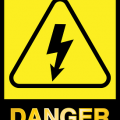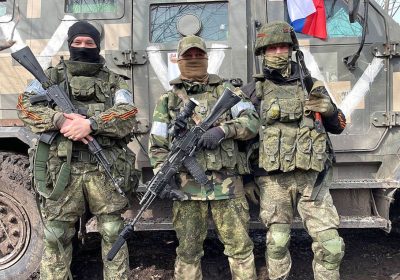De Faakto Outbreak Intelligence
01 February 2019
OUTBREAK INTELLIGENCE SITREP & ANALYSIS
OSINT-World Health Organization, U.S. Center for Disease Control & Associated Press
BACKGROUND-EBOLA DEMOCRATIC REPUBLIC OF CONGO
- Ebola Virus Disease outbreak ongoing 6 months
- The security situation is impacting Ebola response
- Infection rates continue to be a problem
- Noscomial (Hospital Acquired) infections are upward trending due to poor practices and infection control
- 86 % of Ebola cases since 01 December 2018 visited or worked in a health care facility prior to infection (WHO)
- 8 new infections of health care workers (WHO)
- Populations are wary of outside help after years of rebel attacks (AP)
- There is a lack of trust in authorities in Congo because of insecurity and conflict (AP)
- It is challenging to control this type of outbreak without community involvement in rapid detection (WHO)
- 80 percent of Ebola cases are untraceable-officials cannot accurately track the spread of the virus (Doctors Without Borders)
The Ebola Count-Democratic Republic of Congo
- World Health Organization
- 29 January 2019
- 752 Ebola Virus Disease cases (EVD)
- 698 EVD confirmed cases
- 54 probable cases
- 465 deaths (fatality ratio: 62%)
- 118 new cases reported-09 January – 29 January 2019
- 65 health care workers infected to date
- 8 new health care worker infections
WHO Risk Assessment
- WHO reviewed its risk assessment for the outbreak and the risk remains very high at the national and regional levels; the global risk level remains low
- This Ebola virus outbreak is affecting north-eastern provinces of the Democratic Republic of the Congo bordering Uganda, Rwanda and South Sudan
- There is a potential risk for transmission of Ebola virus at the national and regional levels due to extensive travel between the affected areas, the rest of the country, and neighbouring countries
De Faakto Risk Assessment
EBOLA RESPONSE UNDERMINED BY SECURITY IN DEMOCRATIC REPUBLIC OF CONGO
The lack of security is impacting Ebola Virus Disease response activities and increasing the risk that the virus will continue to spread
De Faakto intelligence assessment on 12 October 2018, noted the security situation would directly impact the response of authorities and the procedures required to counter the Ebola Virus. Inadequate infection control continues to be a challenge for health care workers as indicated by reports of the numbers of health care workers being infected. Key mitigation strategies include, improved security, surveillance, screening and infection control.
Without implementation of these strategies and quality assurance the risk of transmission to other immediate regions remains high.
WHO https://www.who.int/csr/don/31-january-2019-ebola-drc/en/
The Associated Press https://www.apnews.com/7c914ab1e8a44a3d93f8e9066b5863af
About Ebola Virus
- Ebola Virus Disease (EVD) is a rare and deadly disease most commonly affecting people and nonhuman primates (monkeys, gorillas, and chimpanzees). It is caused by an infection with a group of viruses within the genus Ebolavirus
- Ebola virus was first discovered in 1976 near the Ebola River in what is now the Democratic Republic of Congo (CDC)
How Is Ebola Spread?
- Ebola virus spreads to people through direct contact with bodily fluids of a person who is sick with or has died from EVD. This can occur when a person touches the infected body fluids (or objects that are contaminated with them), and the virus gets in through broken skin or mucous membranes in the eyes, nose, or mouth. The virus can also spread to people through direct contact with the blood, body fluids and tissues of infected fruit bats or primates. People can get the virus through sexual contact as well (CDC)
Symptoms of Ebola Virus
- Fever
- Severe headache
- Muscle pain
- Weakness
- Fatigue
- Diarrhea
- Vomiting
- Abdominal (stomach) pain
- Unexplained hemorrhage (bleeding or bruising) (CDC)
While in an area affected by Ebola-Avoid
- Contact with blood and body fluids (such as urine, feces, saliva, sweat, vomit, breast milk, semen, and vaginal fluids)
- Items that may have come in contact with an infected person’s blood or body fluids (such as clothes, bedding, needles, and medical equipment)
- Funeral or burial rituals that require handling the body of someone who died from EVD.
Contact with bats and nonhuman primates or blood, fluids and raw meat prepared from these animals (bushmeat) or meat from an unknown source - Contact with semen from a man who had EVD until you know the virus is gone from the semen
- These same prevention methods apply when living in or traveling to an area affected by an Ebola outbreak. After returning from an area affected by Ebola, monitor your health for 21 days and seek medical care immediately if you develop symptoms of EVD (CDC)
Ebola Vaccine
- There is currently no vaccine licensed by the U.S. Food and Drug Administration (FDA) to protect people from Ebola virus
- An experimental vaccine called rVSV-ZEBOV was found to be highly protective against the virus in a trial conducted by the World Health Organization (CDC)
Treatment
- Providing fluids and electrolytes (body salts) through infusion into the vein (intravenously)
- Offering oxygen therapy to maintain oxygen status
- Using medication to support blood pressure, reduce vomiting and diarrhea and to manage fever and pain
- Treating other infections as they occur (CDC)
The U.S. Center for Disease Control https://www.cdc.gov/vhf/ebola/about.html






